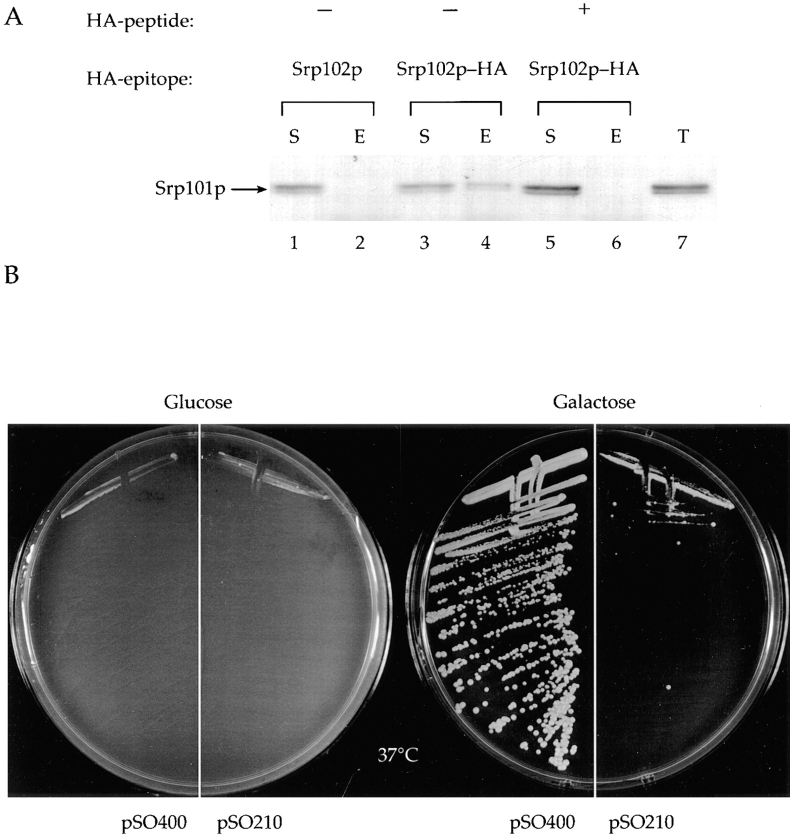Figure 5.
Srp101p and Srp102p interact. (A) Detergent-solubilized microsomes were prepared from cells (lanes 1 and 2, SOY162 bearing pSO454, no tag; lanes 3–6, Srp102p-HA, SOY162 bearing pSO459) as described in Materials and Methods. Solubilized microsomes were subjected to immunoprecipitation using anti-HA either in the absence (lanes 1–4) or the presence (lanes 5 and 6) of excess HA peptide (NH2-YPYDVPDYA-COOH). Immunoprecipitated proteins were eluted from HA-agarose beads, subjected to SDS-PAGE, and analyzed by Western blot using affinity-purified anti-Srp101p antibodies. Eluates from each of the immunoprecipitations are shown in lanes 2, 4, and 6 (E); supernatants shown in lanes 1, 3, and 5 (S). Lane 7 contains 2 OD600 cell equivalents of solubilized membranes as a marker for the amount of Srp101p that is in each of the immunoprecipitations (T). (B) SOY162 cells bearing the srp102(K51I) allele on plasmid pSO462 were transformed with either pSO400 (SRP101 under galactose regulation) or pSO211 (SRP101 under control of its own promoter) and plated onto synthetic plates lacking tryptophan and uracil, and containing 2% galactose or 2% glucose as the sole carbon source. (Glucose), plate containing 2% glucose incubated at 37°C for 3 d. (Galactose) plate containing 2% galactose incubated at 37°C for 3 d.

